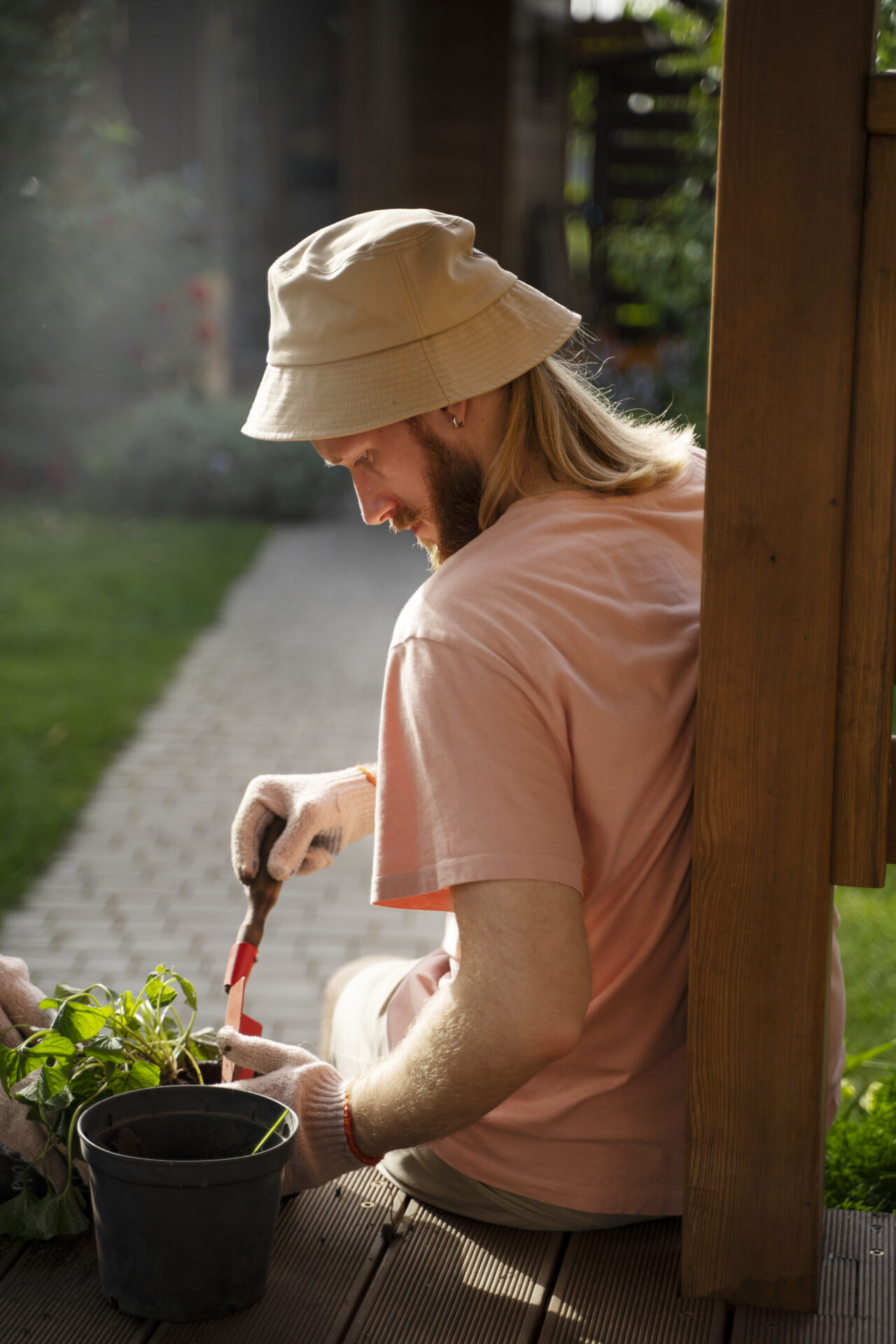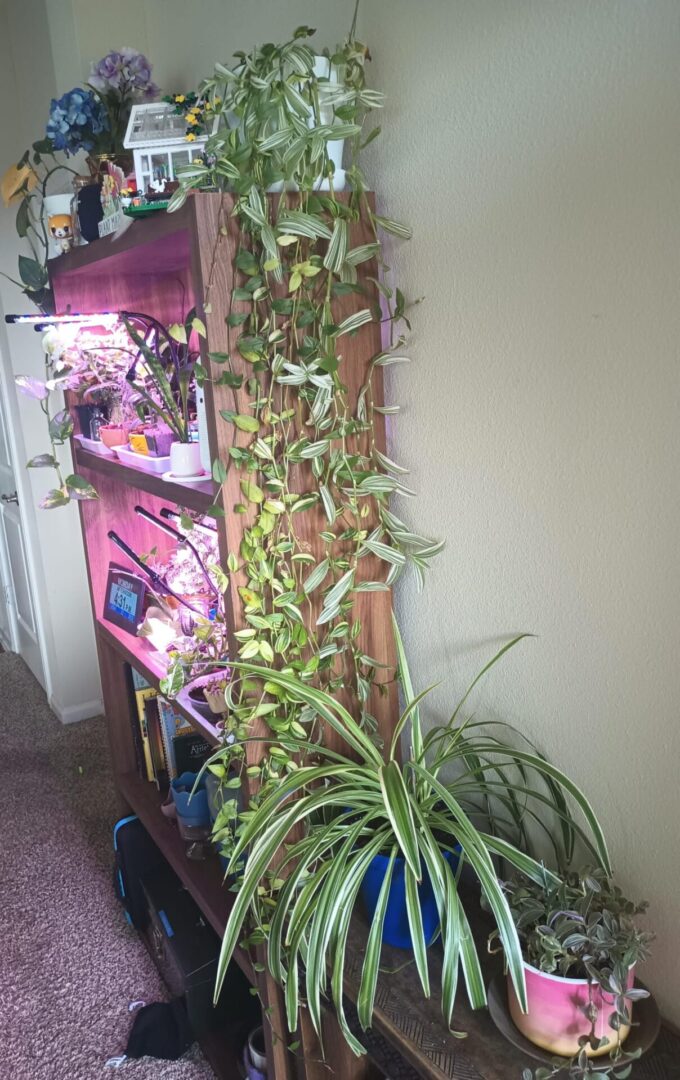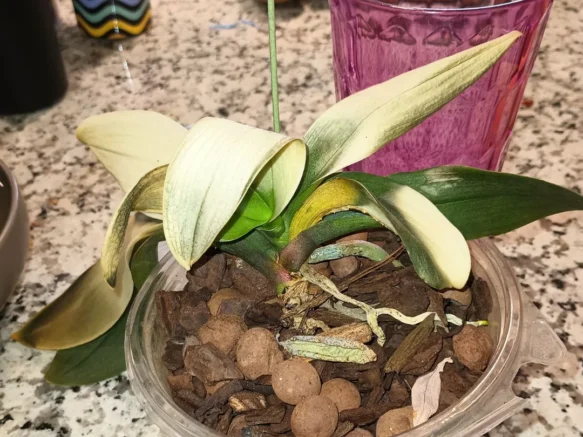Helping Children, Teens, Adults, Couples, and Families reach their full potential through healing and hope in League City, The Woodlands & Midland Texas
From Burnt Leaves to New Life: A Therapeutic Journey Through Gardening
By: MaCae Bairett, MFT Student Intern
Therapy doesn't always begin on a couch. Sometimes, it starts on a balcony, in a backyard, or beside a tiny windowsill herb garden. Before I ever studied mental health, I tried growing plants—not very successfully. But over time, I learned that both plants and people require care, patience, and the right environment to thrive. And research backs this up: spending time with plants, gardening, and even interacting with houseplants can be deeply healing.

1 Mental Health: Reduced Depression and Anxiety
Peer-reviewed meta-analyses and randomized controlled trials (RCTs) consistently show that gardening reduces depression and anxiety.
One umbrella review that analyzed 40 studies found that gardening had a medium positive effect on mental health outcomes—particularly for stress and anxiety reduction (Soga et al., 2022).
Another meta-analysis by Cameron et al. (2020) concluded that participants involved in therapeutic horticulture showed significant improvements in mood, reduced psychological distress, and better overall well-being.
Community gardening in particular fosters a sense of purpose, social connection, and meaningful accomplishment—all of which can support emotional regulation and healing.
2 Physical Health and Cognitive Restoration
Gardening isn’t just good for your mind. It’s good for your body and brain, too. According to a large RCT conducted by the University of Colorado Boulder, first-time community gardeners experienced:
- An extra 42 minutes of physical activity per week
- Healthier diets, including more fiber intake
- significantly reduced perceived stress and anxiety compared to controls.
Other studies suggest that green spaces and plant interactions improve cognitive restoration—especially attention and memory. This is explained by the Attention Restoration Theory, which states that exposure to natural environments helps replenish our mental resources (Berman et al., 2008).
3 Houseplants and “Plant Talk”
Even indoor plants make a difference.
Studies show that houseplants reduce stress, lower blood pressure, and help patients recover faster when visible in hospital rooms (Park & Mattson, 2008).
Therapeutic plant care—like watering, tending, and talking to plants—can mirror mindfulness practices. These interactions create a rhythm of calm, connection, and responsibility, similar to caregiving. Horticultural therapists often include potted plant activities for clients without garden access, because even small moments with a plant can ground us in the present (Son et al., 2016).
My Journey: From Failed Herb Garden to Flourishing Perspective
I started small—with a little herb garden. It was supposed to be easy: basil, thyme, rosemary. But it didn’t last long. Looking back, I overwatered them, not realizing that each plant has different needs. Some craved sunlight; others needed shade. Some preferred moist soil; others, dry. At the time, I saw it as a failure.

Now I see it differently.
That garden taught me that mistakes are part of growth. I didn’t fail—I just hadn’t yet learned what those plants needed. Over time, I paid more attention. I did a little research. I tried again. And now?
I’ve created my own little oasis. My shelves, windowsills, and porch are full of life—each plant unique, with its own rhythms and requirements. I’ve learned to monitor them closely for signs of struggle, whether it’s drooping leaves, dry soil, or too much sun. And there is real joy when a plant that was struggling pushes out a new leaf or slowly starts to recover. It reminds me that healing is possible, even after setbacks.
Gardening is literally grounding. Getting my hands in the dirt, checking the roots, repotting—it brings me back to the present. That tactile connection with the earth has been a powerful tool for calming my nervous system and reconnecting with myself.

And just like with people, noticing what each plant needs—and responding to it with care—can make all the difference.
Burned, But Not Broken: My Orchid Story
One of the plants that taught me the most was an orchid I accidentally sunburned. I didn’t know orchids could get scorched so easily. Its leaves turned yellow, then brown, and I thought I had killed it. But I decided to keep tending to it—moving it to indirect light, watering it less, and checking in on it regularly.
Weeks went by. Then months. And one day, a tiny new leaf appeared. That little sprout was a reminder: healing takes time, and it often happens beneath the surface, long before we see the results.
Here are the before-and-after photos of my orchid’s journey. It still isn’t perfect—but it’s alive, growing, and teaching me to keep showing up


Therapy Is Like Gardening: Individualized, Intentional, and Worth It
Just as every plant has its own care instructions, every person’s therapeutic journey is different. Some people need weekly support; others check in monthly. Some flourish with structure and goals; others need unstructured space to explore.
At Therapy for Families, we honor this uniqueness. Here's what to expect when starting therapy with us:
What to Expect in the First Sessions
- Before your first session
- You'll complete intake forms and assessments. These help your therapist understand your history, symptoms, and goals. They also provide a clinical framework to guide the process.
- Sessions 1–2: Building Connection
- These sessions are all about seeing if you and your therapist are a good match. Do your personalities click? Does their therapeutic style suit your needs? Do their availability and approach align with your goals?
- Therapy is most effective when there’s a sense of trust and fit—this time allows space for that to develop.
- Session 3 and Beyond: Creating a Treatment Plan
Together, you and your therapist will co-create a treatment plan that includes:
- Your goals for therapy
- The frequency of sessions (weekly, biweekly, monthly)
- Preferred methods (CBT, mindfulness, narrative therapy, etc.)
- Any referrals or outside resources that could support your growth
- A timeline for checking in on progress

How You Can Start Today
You don’t need a perfect plan to begin healing—just like you don’t need a greenhouse to start gardening. Here are a few ideas:
- Buy a small plant and learn how to care for it. Let tending to it become a gentle ritual.
- Sit quietly with your plant for a few minutes each day—this can anchor you in mindfulness.
- Talk to your plant—not because it talks back, but because it helps you tune into yourself.
- Join a community garden or a plant swap—connection is part of healing.
- Reach out to a therapist if you're ready to explore personal growth in a supportive setting.
The Takeaway: Growth Is Never Wasted
Whether you're navigating grief, managing anxiety, or simply feeling stuck, healing doesn’t happen all at once. It unfolds with care, attention, and patience. And sometimes, that starts with a leaf, a sprout, or a seed.
Plants remind us that progress isn't always visible, but that doesn’t mean it isn’t happening. Therapy is the same. It’s a space to show up, explore what you need, and grow in your own time and way.
MaCae Bairett, MFT Student Intern
Specializing in anxiety, ADHD, and the relational patterns that impact emotional well-being.
